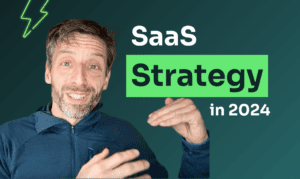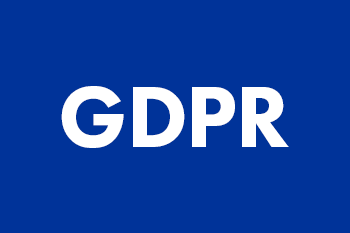Good news: You’re going to find out why LinkedIn’s organic reach has been dropping for everyone. Finally.
Bad news: The poor reach is here to stay. Unless, you do something about it.
In this Electric B2B episode, Jonathan Bland, a paid content distribution ninja, walks us through how he looks at ads, what’s up with LinkedIn, and the shiny new channels for B2B.
Let’s start with the why. Why is LinkedIn’s organic reach such a big deal to B2B marketers?
- B2B thrives on LinkedIn. It’s one of our primary platforms
- Less than 1% of LinkedIn users actually produce content on LinkedIn which makes it super easy to get entry into the crème de la crème crowd
- Being seen on LinkedIn is the short-cut to being recognized and eventually building a brand
- What we produce and how our organic content performs has a direct impact on how our paid stuff will perform
Flipping the coin:
Marketers’ brains are designed to repurpose content. And that’s how most of us function.
Step 1: Create a long form piece of content, think podcast, webinar, blog, etc.
Step 2: Break it down into shorter, bite sized pieces of content, i.e LinkedIn posts.
But, flipping it would work perfectly fine too. First, create LinkedIn posts that resonate with your ICPs consistently. Once you have conversations going, produce longer pieces of content based on the pre-validated topics and then use paid media to drive more traffic to the content
Should everyone run paid ads?
A lot depends on your average deal size, contract value, your CAC payback, LTV and ACV. It boils down to:
- If you can actually afford it
- If you want it
- And if it’s the right time for you to invest in it
If you’re an early stage company with a lot of cash to burn, should you run paid ads? No. Unless you have enough case studies, social proof and content to go around, don’t run paid ads.
But, you can run ads even on a tight budget. Start small, then scale what works.
Let’s say you want to give your content a little push, how do you make that happen?
- Make sure you have good quality content that you’re open to pay for your audience to see
- Focus on retargeting. If you’re going to use LinkedIn for your ads, make sure the Li insights tag is on your website. Check how long they’ve been lurking, if they even qualify, and then retarget them with LinkedIn ads.
- Once you have a few followers (ideally over 300 on LinkedIn), allocate a small budget (less than $1000) to reach all the people in your re-targeting list.
How do you pick the right channels?
- If the category is unknown and the audience isn’t educated about the market, social channels are the way to go. It’s best to avoid Google Ads in this scenario
- But, if you are an established category, Google Ads can help you drive quick, short-term results. All this, provided you’re bidding on the “right” keywords with the right intent.
So, what’s up with LinkedIn’s organic reach?
- LinkedIn makes money with their recruiting platform and paid ads, so it’s only fair that once you have enough organiz reach on your own, LinkedIn would want you to spend money on ads.
- The amount of people producing content on LinkedIn has shot up, so reach is bound to go down
- If you’re talking to a niche audience, your reach is going to be low. But the content probably resonates with the audience more. Quality > quantity.
At the end of the day, it’s about establishing a balance between having generic, mass appealing content and niche content that your audience truly cares about.
TL;DR:
- Whether an ad campaign is working or not also depends on what you’re tracking. Sometimes, it can look like it’s doing perfectly well and then Sales says otherwise. A narrow outlook is going to give you sub-par results so remember to track the right things.
- LinkedIn’s reach dropping is a concern for almost everyone and it’s a great reminder to not put all your eggs in the same basket.
- LinkedIn is the classic channel where most B2B audiences are hanging out. Tik Tok is the new and upcoming one. Irrespective, what really matters is where your audience hangs out, and the answer to that could be either of these, both of these or none of these.
- The content you put out has to be channel specific. What worked on one channel may not work on another.
- Focus on creating ads that give the audience value where they are instead of just inciting them to click through to a different channel. Don’t stick to boring, and be open to experimentation.
- Paid ads aren’t for everyone. But, if budget is the primary issue, you can always start out small.
Related Posts
- The greatest content marketing opportunity in B2B - ep 25
Have you heard the news of the B2B company that went bankrupt because it created…
- The simple B2B growth-marketing play - ep 3
Can you have success with almost zero marketing? Some believe it’s possible. Up to a…
- The B2B agency-model is broken - ep 14
So, this episode of the Electric B2B Show emerged out of this conversation on Linkedin,…


